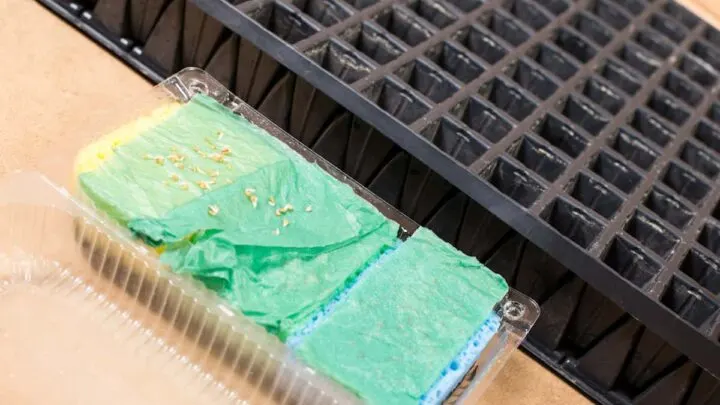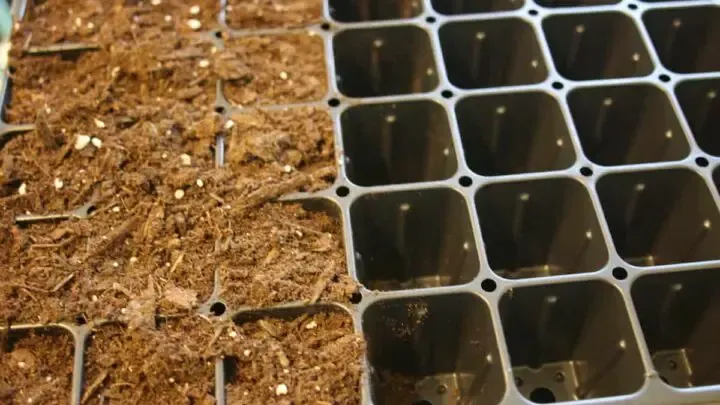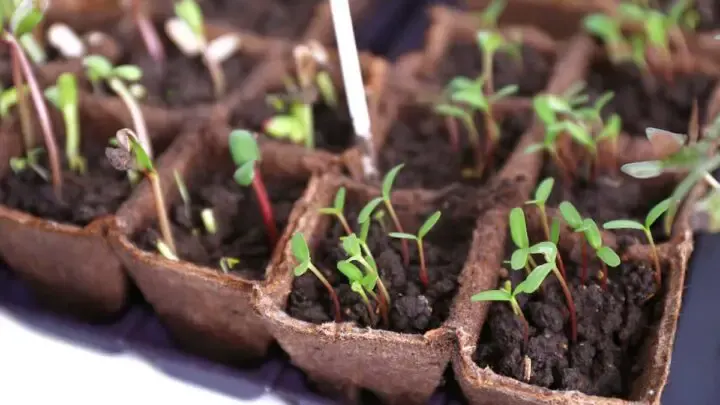One gardening technique you can use while growing beetroot is to grow them in modular trays. This methodology is often used for beetroots because this planting format gives them a booster while they are young and still growing.
You can easily grow beetroot in modules. Growing beetroot in modular trays also is a valuable way to protect your plants from bad weather, pests, and vermin. When growing beetroot this way, it is recommended to use seed compost, as the texture and nutrients present in that topsoil are the best to help the beetroot grow strong and healthy.
Additionally, if you decide to try planting your beetroot in modular trays, you need to be sure to plant them in the soil at a depth of about two inches deep for optimal growing conditions.

How much space do you need to grow beetroot?
Beets, in particular, need to be spaced far enough apart that each plant has adequate room to grow, so it is imperative to ensure you do not plant your beets too close together in your garden. Beets grow wide and horizontally because they are tubers, so they need plenty of space and loose soil to grow without being overcrowded or packed in too tight.
Gardening experts recommend spacing out your beets so that each beet seed is 6 inches apart, with 3 to 4 inches between each plant. When you finish planting them, leave a little soil loose on the top near the surface, giving the beets room to move and grow where they are planted.
What Are The Benefits Of Growing In Modules?
The benefit of growing plants in modules is that you have more control over each individual plant’s growing experience. This method allows you to better control the growth of your seedlings because the structure of modules keeps each plant separated from the other. This allows you to ensure each plant is receiving the unique amount of nutrients and water it needs for optimal growth.
The modular growing method also helps to ensure your plants do not grow on top of each other or start cannibalizing each other’s resources. Growing in modules is a beneficial strategy to use in a garden where you want crop uniformity and where you are hoping to see progress quickly.

Are There Any Disadvantages To Growing In Modules?
Holistically most gardeners find that growing plants using a modular gardening system helps them be more efficient and leads to better crops. However, there are a couple of disadvantages to this system that can arise if you do not execute your modular gardening system correctly.
With modular gardening, it is essential to stay very organized with your plants, as it can be easy to lose track of what was planted in each module. Some plants are not well-suited to be grown using the modular format, as they grow too quickly or cannot conform to the shape of the modular container.
You also have to ensure that you use module trays that are the correct size for the plants you are growing, as they will not grow correctly if they are planted in too deep or too shallow of a container.

Tips For Growing Beetroots In Modular Trays
- Make sure your soil is firmly packed into the module trays before you plant the seeds. Attempt to remove any soil clumps before planting your beetroot seeds. Your beetroot seeds will grow stronger if they are planted into soil that gives them a firm base.
- Warm up your compost soil before you place it in the modules. You can either do this by leaving it out in the sun, or placing it closer to a heat source. Seedlings react better to soil that is not too cold.
- Try to keep your seedlings well spaced out as you plant them in the modules. You want to ensure that they have room to individually grow.
- Beetroot grows best when it is directly seeded, which means planting the seeds directly into soil to grow, and not transporting it into a more permanent home once the seedlings have sprouted. It is best to grow your beetroots from seeds when using modular trays.
What problems do beetroots have while growing?
There are several problems to look out for a while growing beetroot; most of these conditions can occur in any growing scenario. The first is that the beetroot seeds never sprout, which can happen if you wait too long and plant your beetroot once it is too warm.
Another problem is droopy seedlings that look like they may fall over. This is likely because the beetroot is receiving too much water, or the soil is not properly draining the water after you water your beetroot seeds.

While beetroots need water to survive, if the soil is not draining, the plants can retain a lot of moisture and are likely to suffer from the side effects of overwatering.
Beetroots planted in a garden will also attract different bugs, including grasshoppers and flea beetles. If these bugs get a hold of your beetroot, they may attack the plants and prevent your beetroots from growing successfully.
Final Thoughts
Overall, there are a lot of advantages to trying the module tray growing style for beetroots. It’s easy to make sure your plants are getting the water, sunlight, and care they need in this format, and you can quickly make individualized adjustments to certain seedlings if they are struggling to grow.
Module trays are also reusable, so there is an added advantage that you can pull them back out again during the next planting window to grow your next crop. If you do choose to reuse your module trays year after year, make sure to clean them very thoroughly.
Modular trays can carry fungal diseases that will hurt your next seedlings. With proper care and cleaning, these trays can be an easy way to grow plants for years to come, and most gardeners are delighted with the results they provide!

Hi there, my name is Allie and welcome to my blog; GareningWithAllie!
Much of what you see written here is just our personal experiences with gardening. Along with the content I write here, there is also a unique collection of gardening topics covered by some of our close friends. I hope you find everything you read here to be helpful, informative, and something that can make your gardening journey the most lovely experience ever! With that said, Happy Gardening!
